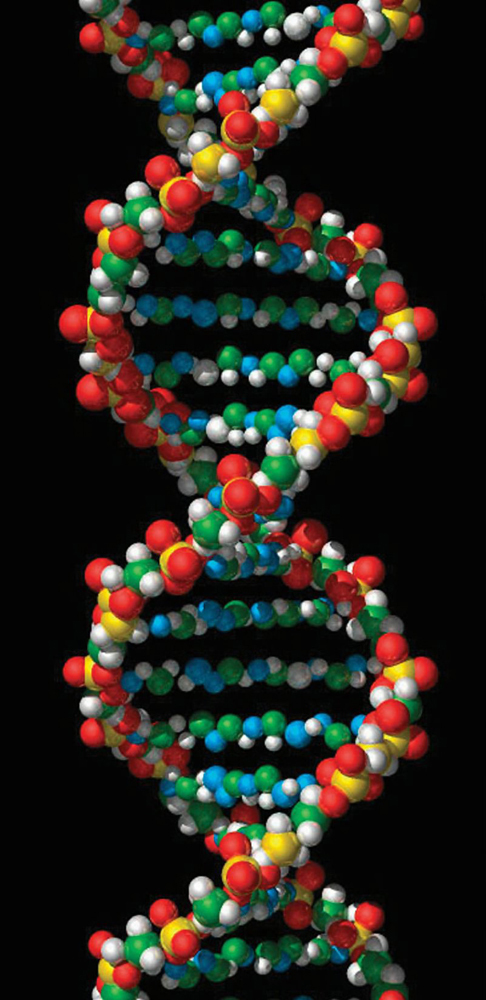
Scientists trying to unravel the mystery of life's origins have been looking at it the wrong way, a new study argues.
Instead of trying to recreate the chemical building blocks that gave rise to life 3.7 billion years ago, scientists should use key differences in the way that living creatures store and process information, suggests new research detailed today (Dec. 11) in the Journal of the Royal Society Interface.
"In trying to explain how life came to exist, people have been fixated on a problem of chemistry, that bringing life into being is like baking a cake, that we have a set of ingredients and instructions to follow," said study co-author Paul Davies, a theoretical physicist and astrobiologist at Arizona State University. "That approach is failing to capture the essence of what life is about."
Living systems are uniquely characterized by two-way flows of information, both from the bottom up and the top down in terms of complexity, the scientists write in the article. For instance, bottom up would move from molecules to cells to whole creatures, while top down would flow the opposite way. The new perspective on life may reframe the way that scientists try to uncover the origin of life and hunt for strange new life forms on other planets. [7 Theories on the Origin of Life]
"Right now, we're focusing on searching for life that's identical to us, with the same molecules," said Chris McKay, an astrobiologist at the NASA Ames Research Center who was not involved in the study. "Their approach potentially lays down a framework that allows us to consider other classes of organic molecules that could be the basis of life."
Chemical approach
For decades, scientists have tried to recreate the primordial events that gave rise to life on the planet. In the famous Miller-Urey experiments reported in 1953, scientists electrically charged a primordial soup of chemicals that mimicked the chemical makeup of the planet's early oceans and found that several simple amino acids, the most primitive building blocks of life, formed as a result.
Get the world’s most fascinating discoveries delivered straight to your inbox.
But since then, scientists aren't much further along in understanding how simple amino acids could have eventually morphed into simple, and then complex, living beings.
Part of the problem is that there isn't really a good definition of what life is, said Sara Walker, study co-author and an astrobiologist at Arizona State University.
"Usually the way we identify life on Earth is always by having DNA present in the organism," Walker told LiveScience. "We don't have a rigorous mathematical way of identifying it."
Using a chemical definition of life — for instance, requiring DNA — may limit the hunt for extraterrestrial life, and it also may wrongly include nonliving systems, for instance, a petri dish full of self-replicating DNA, she said. [5 Bold Claims of Alien Life]
Information processing
Walker's team created a simple mathematical model to capture the transition from a nonliving to a living-breathing being. According to the researchers, all living things have one property that inanimate objects don't: Information flows in two directions.
For instance, when a person touches a hot stove, the molecules in his hand sense heat, transmit that information to the brain, and the brain then tells the molecules of the hand to move. Such two-way information flow governs the behavior of simple and complex life forms alike, from the tiniest bacteria to the giant humpback whale. By contrast, if you put a cookie on the stove, the heat may burn the cookie, but the treat won't do anything to respond.
Another hallmark of living beings is that they have different physical locations for storing and reading information. For instance, the alphabet of letters in DNA carries the instructions for life, but another part of the cell, called the ribosome, must translate those instructions into actions inside the cell, Davies told LiveScience.
(By this definition, computers, which store data on a hard drive and read it off using a central processing unit, would have the hallmarks of life, although that doesn't mean they are alive per se, Walker said.)
The new model is still in its infancy and doesn't yet point to new molecules that could have spawned life on other planets. But it lays out the behavior needed for a system needs to be considered living, Walker said.
"This is a manifesto," said Davies. "It's a call to arms and a way to say we've got to reorient and redefine the subject and look at it in a different way."
Follow LiveScience on Twitter @livescience. We're also on Facebook & Google+.

Tia is the editor-in-chief (premium) and was formerly managing editor and senior writer for Live Science. Her work has appeared in Scientific American, Wired.com, Science News and other outlets. She holds a master's degree in bioengineering from the University of Washington, a graduate certificate in science writing from UC Santa Cruz and a bachelor's degree in mechanical engineering from the University of Texas at Austin. Tia was part of a team at the Milwaukee Journal Sentinel that published the Empty Cradles series on preterm births, which won multiple awards, including the 2012 Casey Medal for Meritorious Journalism.


